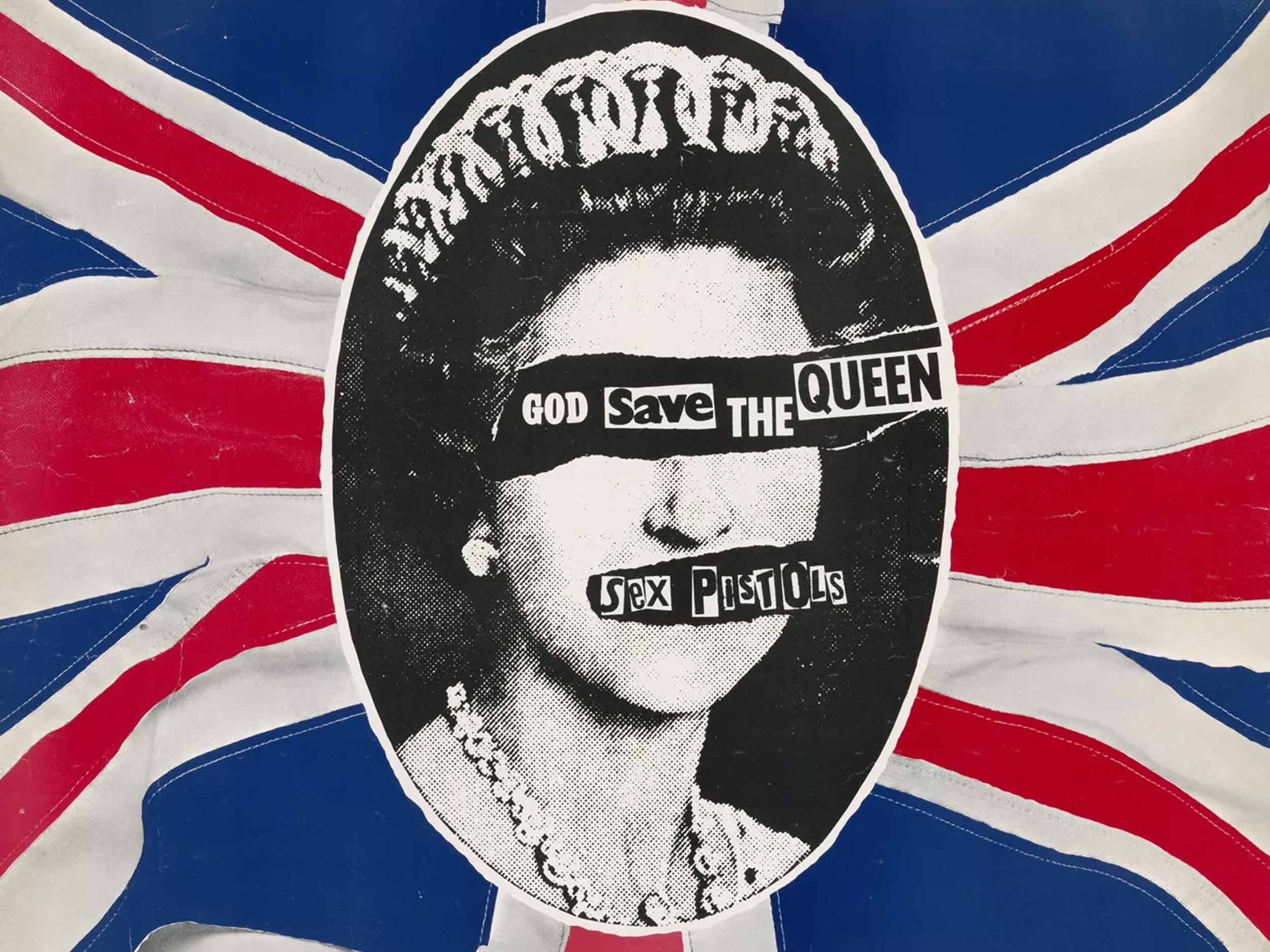From direct action to anti-establishment album covers, the artist and activist waged a 50-year war on social injustice
Artist, iconoclast, anarchist, punk, hippie, rebel. These are a few of the words used to describe Jamie Reid, the recently-deceased renegade artist whose work defined the image of British punk.
Starting in the ’70s, the artist leveraged his anarchist politics to create controversial anti-establishment designs—including cover art and posters for the Sex Pistols, which featured letters from comics and newspapers rearranged to convey his own messaging. Among the most recognized of Reid’s works is the art for “God Save the Queen,” in which he defaced a picture of Queen Elizabeth II, covering her eyes and mouth with lettering advertising the song—which, with its blatant criticism of what it called a “fascist regime,” was banned by the BBC.
So, too, were Reid’s more controversial collages, another of which featured the Queen with a safety pin in her mouth and swastikas for eyes. He also made pioneering use of the “cut-up” method for the band’s iconic Never Mind The Bollocks album cover art, hijacking typefaces from magazines and newspapers to achieve his own ends. Similarly, his art for the Sex Pistols’ “Holidays in the Sun” repurposed a tourism brochure that read, “It’s just a short excursion to see wonderful historic cities,” doctoring it to say, “a cheap holiday in other people’s misery.” Soon, Reid’s signature cut-and-paste, ransom-style lettering was synonymous not only with the punk movement, but the spirit of ’70s protest.
His signature techniques were born both of financial convenience—Reid was a working-class artist, without access to luxury materials—and revolutionary politics, inspired by the avant-garde artists and thinkers of Situationist International. “A lot of ideas, which were very radical, were based on our own ideologies and feelings,” he told Document in 2020. “Obviously, my cut-out lettering, which was a matter of necessity, had that criminal overtone.”
Reid was born in Surrey in 1947 to parents he described as “diehard socialists” who brought him to nuclear disarmament and anti-apartheid rallies. At the age of 16, he enrolled at Croydon Art School, where he met “the greatest conceptual artist of the 20th century”: Malcolm McLaren, future manager of the Sex Pistols. The two bonded over their shared love of Guy Debord’s Situationist manifesto The Society of the Spectacle, and together organized student-led protests that made national news. After graduating, Reid co-founded Suburban Press, a community-run magazine that published everything from anarchist cookbooks to activist pamphlets. Unable to afford typesetting tools, he would cut, paste, and xerox materials from other publications. This DIY ethos would carry through to his design practice: “You start developing an appreciation for what actually looks good—out of sheer necessity, from having no money. Some things gain qualities, some things lose qualities. We had to produce things really fast.”
“A lot of ideas, which were very radical, were based on our own ideologies and feelings. Obviously, my cut-out lettering, which was a matter of necessity, had that criminal overtone.”
In the early-’70s, McLaren founded the Sex Pistols, recruiting a bunch of kids who hung out at SEX—the punk clothing boutique he ran on King’s Road with maverick designer Vivienne Westwood. She would go on to shape the visual identity of punk, dressing the band in provocative S&M-inspired clothing, while Reid pioneered their musical imagery and posters. At the time, such designs were deemed controversial; now, they are collected by museums and embraced by luxury brands—something Reid viewed as the natural lifecycle of countercultural imagery. “Radical ideas will always get appropriated by the mainstream,” he told Another Man in 2018. “The establishment and the people in authority actually lack the ability to be creative. They rob everything they can. So you always have to move on, and move on, and move on.”
Reid never wanted to be part of that “incestuous” world—and this enduring spirit of rebellion permeates his legacy, even in his final years. Well into his 70s, he was still collaborating on political art with balaclava-wearing anarchists like Pussy Riot: the latest installment in Reid’s 50-year war on social and cultural injustices, from Section 28 to the 1994 Criminal Justice and Public Order Act. For Reid, art and politics have always been entwined. When asked in 2018 to give his advice to young artists, his answer was simple: “Destroy your computer. Most jobs are about enslavement. Break free if you can.”







